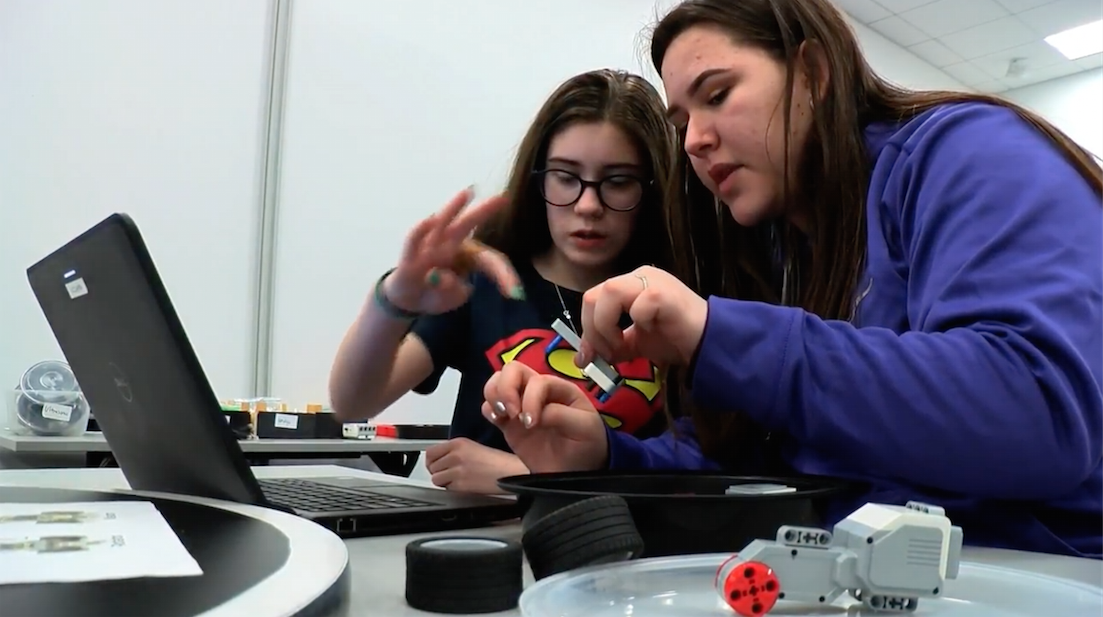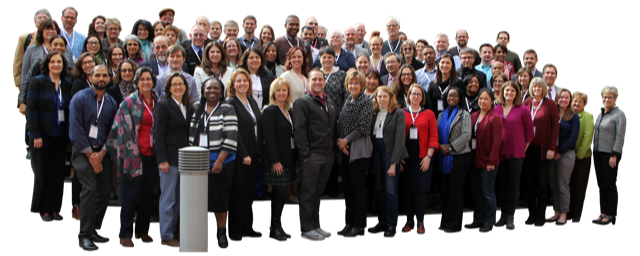
It has long been recognized that computing, as a field, is strikingly less diverse than the users of the technology it produces, exhibiting a stubbornly enduring gender and underrepresented minority gap often referred to as “the Missing 70%.” MGHPCC partner, the NSF funded Expanding Computing Education Pathways (ECEP) Alliance, seeks to facilitate state-level systemic change to improve the quality of computing education and broaden participation in computing (BPC). ECEP’s goal is to increase the recruitment and retention of historically disenfranchised populations to K-16 computer science education through educational advocacy and policy reform.
Reporting by Helen Hill for MGHPCC
ECEP builds on five years of work by BPC projects in Massachusetts and Georgia—the Commonwealth Alliance for Information Technology Education (CAITE) and GeorgiaComputes! Together, these projects, which were begun in 2012, established a template for successfully helping states address the lack of diversity in K-16 computer science. Beginning in partnership with California and South Carolina, and subsequently growing to include Alabama, Arkansas, Connecticut, Hawaii, Indiana, Maryland, Minnesota, Mississippi, New Hampshire, Nevada, North Carolina, Ohio, Oregon, Puerto Rico, Rhode Island, Texas, Utah, Virginia, and Washington, ECEP has grown into a coalition of thought leaders across the country prepared to engage in this work together.

The ECEP Alliance includes 22 states – Alabama, Arkansas, California, Connecticut, Georgia, Hawaii, Indiana, Maryland, Massachusetts, Minnesota, Mississippi, New Hampshire, Nevada, North Carolina, Ohio, Oregon, Rhode Island, South Carolina, Texas, Utah, Virginia, Washington – and the U.S. territory of Puerto Rico.
The ECEP Alliance includes 22 states – Alabama, Arkansas, California, Connecticut, Georgia, Hawaii, Indiana, Maryland, Massachusetts, Minnesota, Mississippi, New Hampshire, Nevada, North Carolina, Ohio, Oregon, Rhode Island, South Carolina, Texas, Utah, Virginia, Washington – and the U.S. territory of Puerto Rico. We sat down with ECEP Alliance Director Sarah Dunton to ask her about ECEP, where the organization is now, how ECEP’s success is measured, and where she sees ECEP going moving forward
Q. What is the problem that ECEP is seeking to address?
A. While we are a mature Broadening Participation in Computing Alliance, we revisit our problem statement regularly. This is due in part to the nature of the work, computer science is always experiencing a metamorphosis, as is education. Combining CS education, policy work, and equity work requires that we constantly ask ourselves if we are really moving the needle on reaching the students historically marginalized in computing and technology. It is incredibly easy to build projects that focus on access, the equity part is more complex. We are constantly asking ourselves ‘how is this effort reaching the women, persons with disabilities, African Americans, Hispanics, Native Americans, indigenous peoples and students in rural communities? How are we developing projects to meet their unique needs? How are we including the missing 70% in our advocacy and our policy? ECEP is committed to ensuring that state leadership teams, teachers, and researchers are prepared to tackle this lack of diversity in computing and computing-intensive degrees.
Students decide as early as their middle school years against computing as a career, but research shows a quality high school computer science experience can change that decision.
Underrepresented minority students often do not gain access to quality computing education unless it is made broadly available K-16.
Q. What is ECEP’s approach to tackling the "Missing 70%" problem?
A. The ECEP Alliance is designed as a collective impact model, with the leadership team comprised of Dr. Carol Fletcher, ECEP principal investigator at The University of Texas Austin, co-principal investigators. Dr. Maureen Biggers, and Dr. Anne Leftwich, Indiana University at Bloomington, John Goodhue, MGHPCC Executive Director, Dr. Debra Richardson, University of California Irvine, Dr. Leigh Ann DeLyser, CSforALL, and myself serving as the backbone organization working with our various state teams. We catalyze and incubate state teams focused on policies, interventions, and metrics. The alliance overall functions in both a top-down and bottom-up capacity. Top-down activities include: Serving as a knowledge broker, tracking BPC change efforts, hosting many summits promoting network building and resource sharing, developing and distributing educational resources. Bottom-up activities are really any state-led work that informs the needs in a state and supports the overall work of ECEP.
As an alliance, ECEP works to create a constant flow of ideas, tools, and strategies to confront the lack of diversity in computer science and computing. Our Model of State Change, with 5-stages, serves as a roadmap for BPC work. In each ECEP state, there are broad-based leadership teams working on localized efforts such as utilizing available data to identify underrepresented populations of students in K-16 computing education, developing a sustainability plan (funding, leadership), defining what “counts” as computer science in K-12, designing and utilizing population-specific strategies to engage students in computing education (including student recruitment, and curriculum adoption).
Q.How does ECEP measure its progress? What are some specific successes?
A. Computer science education is a rapidly changing environment. We use an external evaluator, SageFox Consulting, to facilitate an annual evaluation of our work. This entails sending every member of the state teams in our 23 Alliance states a digital evaluation, and often includes a series of follow-up interviews. In addition, ECEP’s work with state teams is iterative: there is a constant give and take of information that allows us to measure the overall work of our collective efforts, and adjust and adapt to best meet the needs of individual state efforts. Sometimes it feels as though every interaction is a data point, pointing us to something new to consider in our work, an action to take, or a new research direction. Much of our work is exploratory, CS is not a required course, and there are so many systemic issues to address in the equity space that we always need to be listening and refining our work.
ECEP’s successes are really the successes of our state teams. When a state like Maryland holds its annual computer science education summit, and drives attention to issues of equity and access in K-12 CS education and successfully advocates for millions of dollars in state funding to address the gaps: that is a collective success. When state leaders join our monthly calls to vet ideas around data collection systems based on actual data points, that is a success.
Our greatest success, as well as our greatest challenge, is keeping broadening participation at the core of our collective efforts. It is all too easy to focus on access to computer science education. If we do not specifically identify which students are lacking access, which students are not being recruited into CS courses, and which students do not pursue computing pathways, we are potentially sustaining an inequitable system. For this reason, we spend a significant amount of time asking ourselves and our network ‘how is this supporting broadening participation in computing?’ Every conversation of ours should have multiple people asking this question.
Q.How can people find out more/ get involved?
A. ECEP is Open Source, so you can spend some time on our website and email us with questions. We are here to point you to specific resources from the NSF, other BPC Alliances, our state teams, and our national partners. When people email us with questions, it helps us to learn in this space too.
Depending on the level of your interest, be it local (school, community), state (DOE, government), or national (research, industry), there are resources on our website that will be helpful. We are also available for coaching sessions.
Story image courtesy Holyoke Codes.